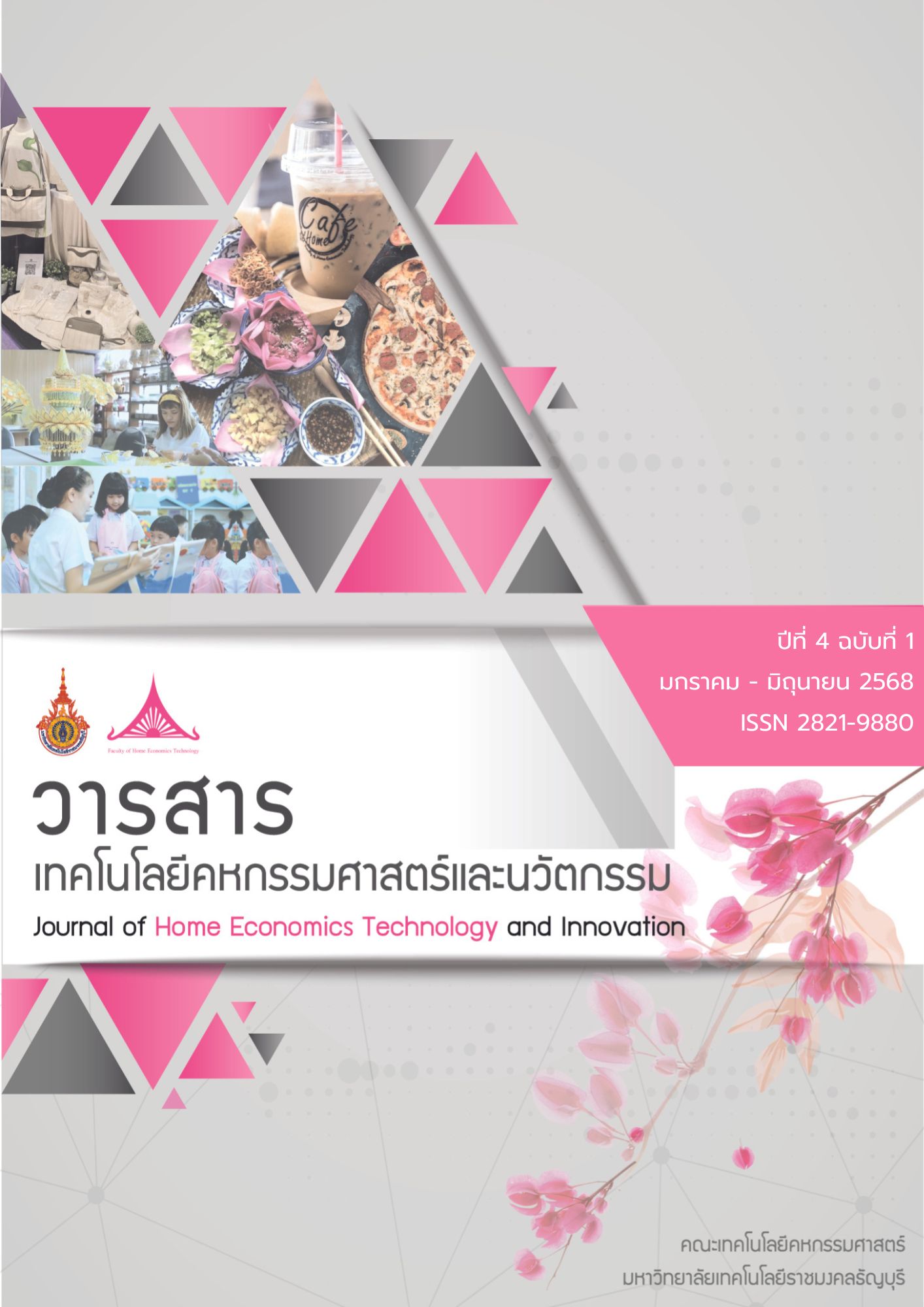Decoding the Strategy of Louis Vuitton in the Eyes of Thai Customers in 2024: The Timeless Blend of Heritage and Modernity Infinity
Main Article Content
Abstract
This academic article aims to examine the strategic approaches employed by Louis Vuitton, a globally renowned luxury and Hi–End fashion brand, with a particular focus on its handbag product lines and related innovations. The research objectives are threefold: 1) To analyze the strategic brand management of Louis Vuitton, 2) To explore strategic perspectives from designers, business professionals, and students in fashion and product design, and 3) To investigate emerging strategies in fashion entrepreneurship for both short-term responsiveness and long-term sustainability. Louis Vuitton represents a leading example of how a heritage brand can successfully to meet the shifting demands of modern consumers, especially in the dynamic Asian market. The brand’s strategic integration of timeless elegance and contemporary innovation reflects its commitment to continuous brand development. This study uses a literature review methodology of draws upon key theories in marketing strategy, luxurious branding, and consumer loyalty management. Key findings reveal that Louis Vuitton strategically engages in co-branding with emerging artists and emphasizes sustainability and environmental consciousness (Zhu, 2023). The brand further adopts ARTification, embedding artistic value into its products to enhance emotional engagement and collectible worth. Through art-based strategies, Louis Vuitton has created distinct brand differentiation in the luxury fashion landscape. Despite global market conditions, Louis Vuitton continues to preserve its heritage while responding to contemporary consumer expectations. The brand's balance of tradition and innovation has sustained its global leadership in the luxury and high-end fashion sector.
Article Details
Articles published are copyright of the Journal of Home Economics Technology and Innovation. Rajamangala University of Technology Thanyaburi The statements contained in each article in this academic journal are the personal opinions of each author and are not related to Rajamangala University of Technology Thanyaburi and other faculty members at the university in any way Responsibility for all elements of each article belongs to each author. If there is any mistake Each author is solely responsible for his or her own articles.
References
ธนะรัชต์ พลอาจ. (2566). ปัจจัยที่มีีผลต่อการตัดสินใจในการลงทุนโดยตรงจากต่างประเทศ(FDI) ของบรษัทเอกชนไทยในประเทศสาธารณรัฐแห่งสหภาพเมียนมา. [วิทยานิพนธ์ปริญญามหาบัณฑิต, มหาวิทยาลัยศรีนครินทร์วิโรฒ] DSpace at Srinakharinwirot University. http://ir-ithesis.swu.ac.th/dspace/handle/123456789/1132
พิภัทรา วงศ์พิอังกุล.(2564). L'Officiel Thailand: 200ปีของLouis Vuitton กับประวัติอันน่าทึ่งของผู้ก่อตั้ง“มองซิเออร์ หลุยส์ วิตตอง”. เข้าถึงด้วย https://lofficielthailand.com/2021/08/200louis-vuitton
ชัยชนะ ตรีสุกิตติมา. (2558). การจัดการนำเข้าและส่งออก (พิมพ์ครั้งที่ 1). กรุงเทพฯ : สำนักพิมพ์แห่งจุฬาลงกรณ์มหาวิทยาลัย.
Amenuvor. F. E., Akasreku. F., & Mensah K. (2023, October 11). Journal of Marketing Intelligence & Planning. Emerald Publishing Limited. Examining the effect of brand coolness on communal brand connection and brand commitment: mediation and moderation perspective. DOI 10.1108/MIP-03-2023-0082
Bagozzi, R.P. and Khoshnevis, M., (2022, June 21). Journal of Marketing Theory and Practice. How and when brand coolness transforms product quality judgments into positive word of mouth and intentions tobuy/use. 31(4), 383-402. https://doi.org/10.1080/10696679.2022.2081925
Bank of Thailand. (2024). Direct investment abroad. Retrieved January 2025. https://www.bot.or.th/th/our roles/financial- markets/foreign-exchange-regulations/foreign-exchange-laws/Direct-Investment1.html
Liu Z. (2024, September 18). Journal of Highlights in Business, Economics and Management. Louis Vuitton Design Style to Attract Consumers. 37, 253-258. https://doi.org/10.54097/ynb4ba21
Louis Vuitton. (2024). สืบค้นจาก Wikipedia- https://en.wikipedia.org/wiki/Louis_Vuitton สืบค้นเมื่อ 12 กันยายน 2567
Loureiro. S. M. C., Aleem, A., & Breazeale, M., (2024, September 13). Spanish Journal of Marketing. Luxury fashionbrand coolness: niche versus mass cool. 28(2), 165-168. https://www.emerald.com/insight/2444-9709.htm
Kasztalska, A. M. (2018, September 24). CBU International Conference on Innovations in Science and Education-Journals.cz. Louis Vuitton as an example of the old modern in the same time luxury brand in the eyes of its clientele. 6, 226-230. http://dx.doi.org/10.12955/cbup.v6.1161
Kate. (2024, April 25). Vintage Louis Vuitton Noé, the world's first Bucket legend. Retrieved September 2024. https://style.katexoxo.com/vintage-louis-vuitton-noe/
Sukontaroat Kongcharoen. (2024, June 6th-7th). Strategies to Teach European History to Students of Art & Design Creative Entrepreneurship to Understand the Movement and Aesthetics’ Significance during the 15th-17th Period. [Oral Presentation]. 1st International and 8th National Conference on Humanities and Social Sciences 2024. Liberal Arts in the Role of Cultural Capital, Bangkok, Thailand.
The Journalist Club [JNC Team]. (2024, September 1). Louis Vuitton Shocked by the weakening yen, tourists in Japan is shopping in full force. https://thejournalistclub.com/louis-vuitton-japan-yen-weak-tourist-shopping/
Wang S., (2023, January 1). Journal of Highlights in Business, Economics and Management. A Study on the Impact of Louis Vuitton's Business Strategy. 24, 1569-1575. DOI: 10.54097/my9yhg26
Zhu, G. (2023, September 9). Journal of Innovation and Development. Research on the Sustainability of Environmental Protection of Fashion Brands: Take Louis Vuitton as an Example, 4(2), 8-10. DOI:10.54097/jid.v4i2.11612


